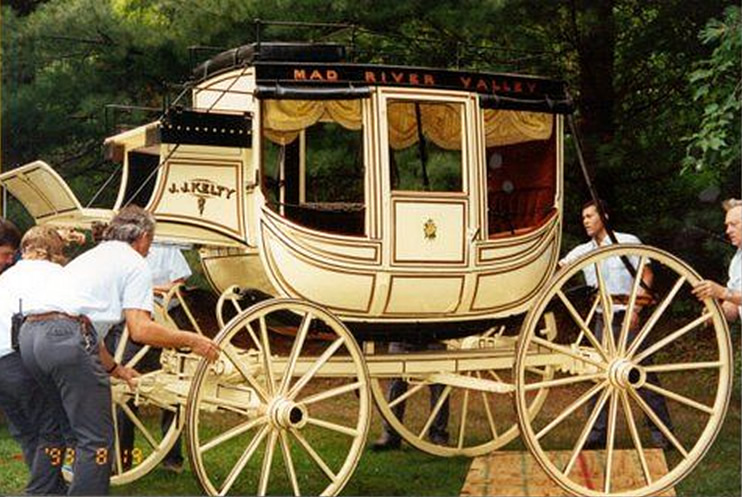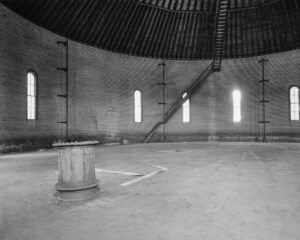
Saving the Gasholder
 February 20, 2021
February 20, 2021
John Gfroerer
5 Davis St.
Concord, NH 03301
603-224-0364
FOOT OFF THE GAS
Progress. There is no one simple definition for progress. Its measure can be different for everyone and everything. Maybe even every circumstance.
When driving in my car, progress is easily and quickly defined. The goal is getting there. The closer we are, the faster we go, every mile left behind, is progress with a clearly defined conclusion.
In the evolution of a community, however, progress can have multiple incarnations, occasionally all at the same time. And here is where things start to be interesting. Because sometimes progress can be in the form of just stopping. I’m not talking about having the City Council approving that stop sign for the end of your street instead of that round-a-bout. I’m talking about the act of actually stopping. Looking around and taking a breath, seeing what there is to see.
For instance, let’s take the intersection of South Main, West Street and Water Street. Surely worth a stop and look.
It is an interesting mix at that bend. You have a MacDonald’s and a Dunkin Doughnuts. You have Vinnie’s Pizza, a quick stop convenience store and a hairdresser. All in use active fragments of contemporary society with a uniquely Concord twist. And hanging on in the background, hanging on by maybe its last fingernail, is that even more uniquely Concord relic, the “Gas Holder.”
In a metaphoric sense, it seems to be holding off its inevitable future demise from encroaching fast food, fast service, and good-looking hair. No longer useful, you might say the gas holder has patiently waited what fate may bring. Having waited now for nearly seventy years since it was taken out of service in 1952, the answer may finally be calling for resolution. And it is up to us to decide, or at least let our voices be heard.
I read a story recently about Najin and Fatu, the last two living Northern White Rhinos. Mother and daughter, they live at a preserve in Kenya, where they are carefully watched and protected. When they die, their species will come to an end, and there is really nothing that can be done to stop that from happening. When they are gone, they are gone. We had a lesson in that a few years back here in New Hampshire with the Old Man of the Mountain. When it was gone, it was gone. Even after years of preservation efforts.
But this isn’t about rhinos in Africa or odd stone formations in the White Mountains; this is about us here in Concord. We have been presented with stewardship of something that is the last of its kind as well–the gas holder. What will be our response to protecting part of our past, saving it from extinction? Are we being called to preserve or called to put the pedal to the metal on the bulldozer?
Cost comes with either decision. There is a cost to preserve and restore, and there is the cost to get rid of it. What skews the scale is that the cost to preserve is measured in dollars spent, lots of dollars. The cost to tear it down is measured by a perception that it would be cheaper and easier than saving. Often in this kind of a show down, the easier alternative prevails.
But we are talking progress here. We are talking progress as a product of stopping. Admittedly, the harder, more complicated thing will be to save the gas holder. In a sense we have run away from that responsibility for the last 40 or more years. Seems that now we are being forced to stop the running and finally take action.
Let me quote from a report done on the Gas Holder in 1982, written by historian Bill Taylor:
“An unaltered gasholder from the nineteenth century, still surviving after decades of disuse, is one of those fortunate circumstances for which industrial archeologists must be appreciative. This quite ordinary structure has become a unique artifact and an example of a once quite important…manufacturing process. It and those now vanished aided immeasurably in improving the quality of life in the nineteenth and twentieth centuries.”
Written nearly 40 years ago, it remains even more true today.
Let’s come together as a community and do something about this. It will be a challenge for sure. But when the work is done, and the last gas holder of its kind in America has been saved and preserved, there will be no regret about the accomplishment.
For more information about the Gas Holder and how you can get involved, click here: https://www.saveourgasholder.org/

The Birth of the Greater Concord Chamber of Commerce
At the Annual Meeting of the Greater Concord Chamber of Commerce in the fall of 2018, Byron Champlin presented a history of the Chamber as it approaches it’s 100th birthday in 2019. Here is Byron’s presentation:
The Birth of the Greater Concord Chamber of Commerce
© 2018 Byron O. Champlin
Nineteen-hundred and nineteen was an eventful year. It was a year of transition, as the world tried to find a path to normalcy in the wake of a great global war that cost millions of lives and reshaped the political landscape in Europe and the Middle East.
In the United States, Congress passed the 19th Amendment, gaining women the vote, Edsel Ford took the helm of Ford Motor Company from his father, Henry, and United Parcel Service—UPS to us today— was launched.
Manned flight, a novelty just 16 years before, saw rapid advances. In May 1919, a U.S. Navy flying boat made the first transatlantic flight, hopscotching to Europe in 11 days. The following month, British flyers Alcock and Brown crossed the Atlantic nonstop in less than 16 hours. The first scheduled airplane passenger service began in August between Paris and London and KLM Royal Dutch Airlines—today the oldest airline in the world—was founded in October.
Events that would loom large in coming decades unfolded in Europe. The Treaty of Versailles, which officially ended World War I and created the League of Nations, was signed in June, only to be rejected by the United States Senate. In Italy, a veteran of the World War named Benito Mussolini founded his Fascist Party, while another veteran named Adolf Hitler joined the obscure, seven-member German Worker’s Party, which he would transform into the National Socialist—or Nazi—Party.
It was also a year of disasters. In January, two million gallons of molasses from a burst storage tank swept through the streets of Boston. The Volstead Act, creating Prohibition, was passed by Congress in October. And in December the Red Sox came to an agreement on the sale of Babe Ruth to the Yankees. Dark days, indeed.
Concord in 1919 was experiencing the last throes of the great influenza epidemic. Local businesses were recovering from the effects of wartime rationing and government regulation of almost every aspect of industry, and the virtual cessation of new construction. The big news was that after years of effort the Boston & Maine Railroad—the major employer in town—had merged most of its leased lines, including the Concord & Montreal Railroad.
At this juncture, leaders of the Concord Board of Trade resolved to transform themselves into a Chamber of Commerce. The Board received its Certificate of Organization from the Chamber of Commerce of the United States on October 18th, 1919, and adopted a constitution and by-Laws at an organizational meeting on December 19th. George A. Foster a prominent local businessman, was elected the first president, equivalent to today’s chairman of the board.
Among the first orders of business on December 19th was to create a committee to review the plant, organization, finances, and the possibilities of the Abbot-Downing Truck & Body Company in order to help the financially troubled company make a fresh start. The Chamber also moved to bring the 1920 annual meeting of the State Grange to Concord and to attempt to get Sears Roebuck Company to move its Littleton, New Hampshire, factory to Concord. In the months to come, the Chamber would create a committee, which included former World War I combat pilot John Gilbert Winant, to explore building a municipal airfield and fielded a suggestion to put signs and pamphlets in hotels to “boom” Concord and show the points of interest. These are efforts that would not be alien to twenty-first century Chamber members.
At the Chamber’s founding, it had 434 individual members who paid dues of $10 per year, as well as 32 sustaining members—including future Governor Winant—whose annual dues were $100.
Four of those sustaining members were Swenson Granite Works, Page Belting Company, St. Paul’s School and Concord Electric Company (today part of Unitil), all of which have remained Chamber members to this day. That’s 99 years, for the math-impaired.
For more information on today’s Greater Concord Chamber of Commerce, see www.concordnhchamber.com. The Chamber’s office is now located on the ground floor of 49 South Main Street, Concord.
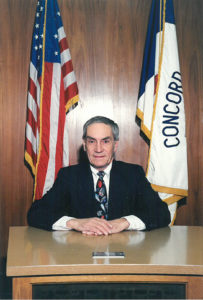
A Tribute to Bill Veroneau
By Richard W. Osborne
On November 4, 2017, William J. Veroneau, the first chairman of the Concord Historical Society, died at the age of 87 at Hospice House in Concord. We are pleased to honor the memory of Bill with this tribute.
Bill Veroneau was unquestionably one of Concord’s most important citizens during the last third of the 20th century with a legacy that continues into the 21st. Most notably, Bill was elected Concord’s Mayor by his fellow members of the City Council in 1991, and following approval of a new City Charter in 1992, was re-elected by popular vote to four more consecutive terms – 1993, ’95, ’97, and 1999. The hallmark of his ten years as Mayor was his successful determination not to raise the city portion of Concord’s property tax rate. His tenure as Mayor was the longest in the city’s history up to that time (a record eclipsed since by Mayor Jim Bouley).
Mayor Veroneau’s leadership of the City Council was marked by a firm but fair wielding of the gavel at countless meetings and public hearings. His can-do attitude resulted in finding a way to get the Grappone Conference Center financed and built, establishing the creative and innovative redevelopment plan for what was called Concord’s “opportunity corridor”, and implementation of the “20/20 Vision” process for the city’s future.
A successful businessman in Concord and Penacook as owner of a Nationwide Insurance agency, and a loving single father to seven children, Bill also threw himself into many other public-spirited endeavors. He was a member of the Bishop Brady High School Board for eight years, the last two (1975-77) as chairman. He was Moderator of the Merrimack Valley School District for ten years, served as a trustee of Concord Hospital, President of the Concord Chapter of the American Heart Association, and director of the New Hampshire Symphony Orchestra.
In the first decade of the 21st century, following his retirement from the Mayor’s position, Bill was instrumental in the formation of the Concord Historical Society, and served several months as its first chairman. Under his leadership, the Society decided to embark on the writing and publication of an updated history of Concord, That eventually came to fruition in 2011 when the Society published Crosscurrents of Change: Concord, N.H.in the 20th Century.
At funeral services for Bill Veroneau, the following eulogy was delivered by Bill Norton, a long time friend and business associate and President of Norton Asset Management, Inc.:
William J. Veroneau
Where to start
* A family man first and foremost.
* A deeply religious and faithful man.
* A leader in the City, the Chamber of Commerce and Rotary.
* A wonderful friend.
* An example to most of us on how to balance work, family and community service.
* A mentor to many.
I met Bill Veroneau 32 years ago. I heard a great deal about him of course. He was Mr. Penacook in those days and quite a figure at Bishop Brady High School. I liked him from the start. He was a very likeable man. No pretensions. Down to Earth.
We worked on many Chamber and Civic endeavors together – most especially the re-vitalization of the Opportunity Corridor and then the 20/20 Vision for the City. He was not keen on the latter idea initially. But he was open to listening. We arranged for him to go to Philadelphia representing New Hampshire in a Mayor’s Symposium by the American Institute of Architects.
He was very proud of his City, Concord, NH and he prepared his presentation in minute detail -all his notes on index cards. He rehearsed it a dozen times to make sure he had the timing down to the last second. With Bill V., timeliness was next to Godliness!!
After working so hard to present his City, Concord, to the other 13 Mayors, he became a convert to the concept that a vision plan was the basis for a city’s future development – and re-development.
He threw himself into the fundraising for the Grappone Conference Center. He always got up early, did his workout, most often went to church and for 10 years he was the Mayor from 7:30 a.m. to 10 a.m. Then he was Bill Veroneau, the Nationwide agent, until 3 or 4 pm. when he became Mayor again. My interactions with him usually involved a breakfast at the Cornerview Restaurant. Although some were on the golf course!
More recently, for three long years he struggled to regain his strength and stamina after suffering a stroke. It was a long slog. But throughout these last trying years he did his best, keeping his spirits, and hoping for a breakthrough. It was not to be. So as with all things Bill Veroneau, he faced these last years with dignity and determination. For those of us who observed him, he set an example of how to be the best you can with what you have (or has been given to you).
Bill, Mr. Veroneau, Mayor Veroneau, Dad, we will miss you. Thank you for all you have done for us and all that you have given us.
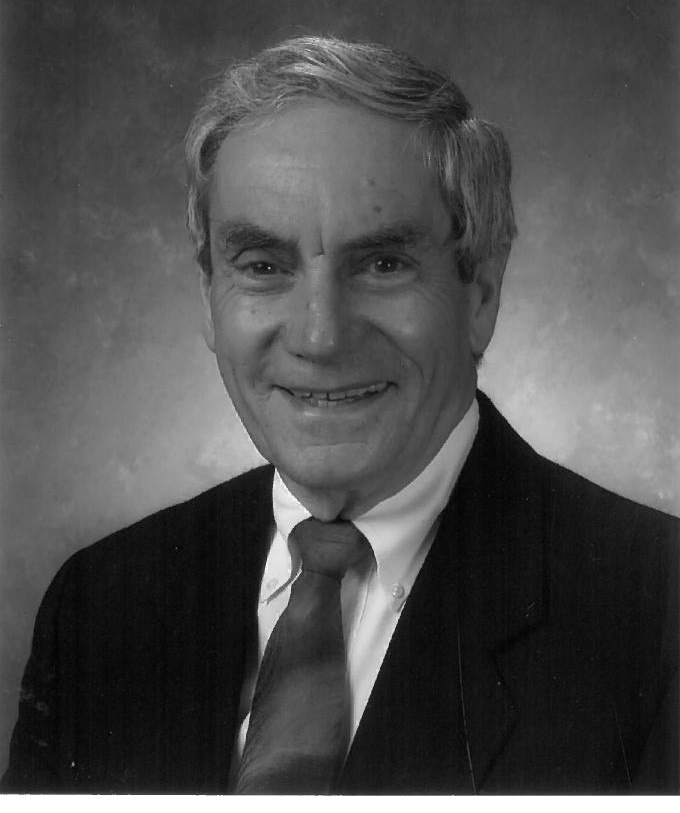
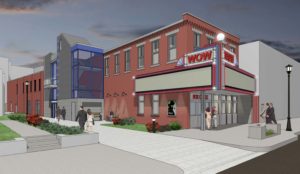
Concord Theatre to get New Life
Nearly a quarter century after “The End” flickered on the Concord Theatre screen for the final time, the old movie house will get a new lease on life, thanks to Concord-based developer Steve Duprey and the Capitol Center for the Arts.
After the theatre was closed in 1994 by longtime owner Theresa Cantin, it was purchased by the Leon Aznive family, owners of the Star Building on Pleasant Street, with which it shared a common wall. It remained in the Aznive family until 2017 when it came to the attention of Duprey. Although the Aznives never made any redevelopment plans for the old theater, Duprey says they should be thanked for paying property taxes and maintaining the building over many years.
The non-profit Capitol Center for the Arts, further down South Main Street, was planning an expansion and renovation, including a small 100-seat movie venue to supplement its main stage theater and Governor’s Hall event center. Duprey, who had long been active with the CCA, got the idea to redevelop the Concord Theatre and then sell it to the CCA.
Using about $2 million in tax credits under a New Hampshire law that also made possible two earlier major South Main Street redevelopment projects carried out by the Duprey Companies, the Concord Theatre will be totally renovated, creating a 275-seat movie theater, a small performance space, and kitchen. The movie theater seating will telescope into the walls, creating the performance space.
Steve Duprey says the financing and approvals for the project have already been obtained, and he expects construction to begin in June or July of 2018, with completion expected about ten months later.
The renovated space will allow the Capitol Center for the Arts to schedule an estimated 150 additional events annually. The CCA also plans to move its main ticket office down the street to the Concord Theatre’s more central location according to Duprey, who adds that naming rights to the redeveloped space have been sold to an as-yet undisclosed business.
Overall, the re-born Concord Theatre promises to add to city’s reputation as a magnet for the performing and visual arts. It’s all a part of Concord’s growing creative economy.
The Concord Theatre by Paul E. Brogan
The Concord Theatre has sat quietly and unobtrusively on South Main Street in Concord, since closing its doors in September of 1994. However, for the previous 61 years, it had been a veritable bee-hive of activity, showing thousands of movies on its silver screen and selling well over one and a half million tickets to moviegoers.
When the Concord Theatre opened in October of 1933, it faced steep competition from two other larger movie theaters – The Capitol Theater on South Main Street and The Star Theatre on Pleasant Street. They were part of the powerful Maine-New Hampshire Theaters Company, owned by Joseph P. Kennedy, father of the future President of the United States.
Kennedy didn’t hesitate in telling Theresa Cantin, co-owner of the Concord, that it was fine for women to sell tickets or work in the concession stand, but they didn’t belong at the helm – owning a theater. His “advice” didn’t deter Theresa, who bought out her business partner in 1947 and owned and operated the theater herself for the next 47 years. In fact no other woman ever owned a first-run, independent movie theater for the number of years that Theresa Cantin did.
The Concord Theatre was an important part of the local community and Theresa treated each and every customer with the same degree of concern that your experience at the movies be as satisfying as possible. Whether you were a surgeon or worked at the five and dime, your opinion had value once you walked through the doors of the Concord Theatre and purchased your ticket.
During its years as a film emporium, the Concord showed just about every type of film. There were Academy Award winning blockbusters, foreign films with subtitles, westerns, serials, and even a few titles that would go on to become “camp classics”. One in particular, “Valley of the Dolls” holds the record for the most tickets sold during its engagement. Just over 15,000 tickets were sold when this film played in the early months of 1968 at a time when Concord’s population was under 30,000.
The arrival of television in the early 50’s, the heyday of the drive-ins, the arrival of the multiplex cinemas – The Concord Theatre survived all of these, continuing to flourish into the 1990’s. During its last year, award-winning successes like “The Crying Game” and “The Piano” played to large and appreciative crowds. What it could not survive, however, was the passage of time for its owner.
When the theater opened its doors in 1933, Theresa Cantin was 19 old. When she finally decided it was time to close the doors, she was only weeks short of her 81st birthday. She had spent her life providing the best entertainment she could book for her audiences. She once noted when asked why she never took a vacation, “Because I’ve seen the whole world up there on the screen.” So did the generation of audience members fortunate enough to experience The Concord Theatre.
Paul E. Brogan is the author of a forthcoming book, “The Concord Theatre and Theresa Cantin – A Love Affair with the Movies – 1933 – 1994”, scheduled to be released in 2018.
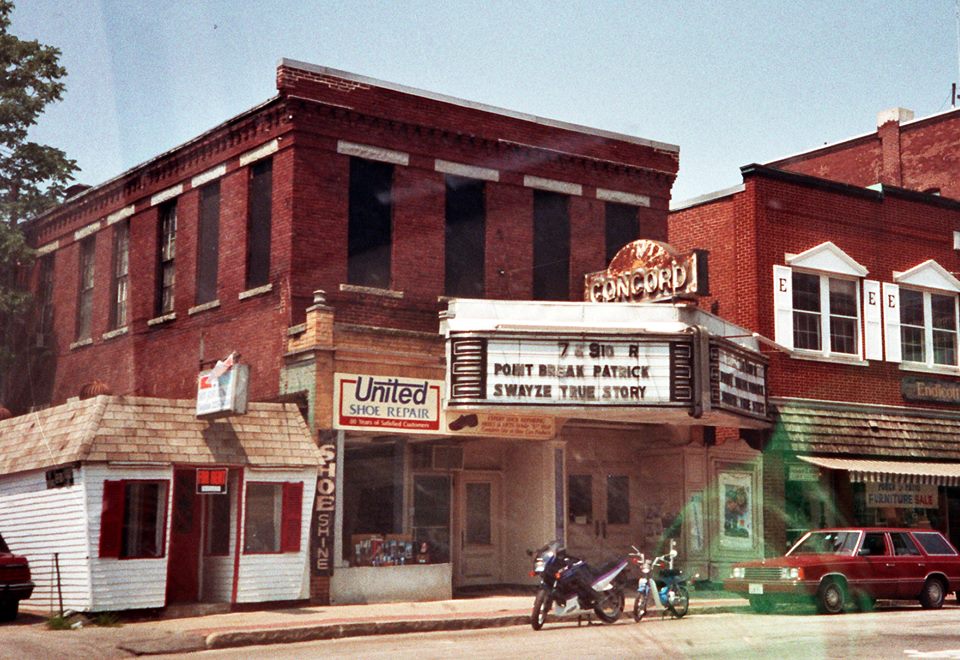
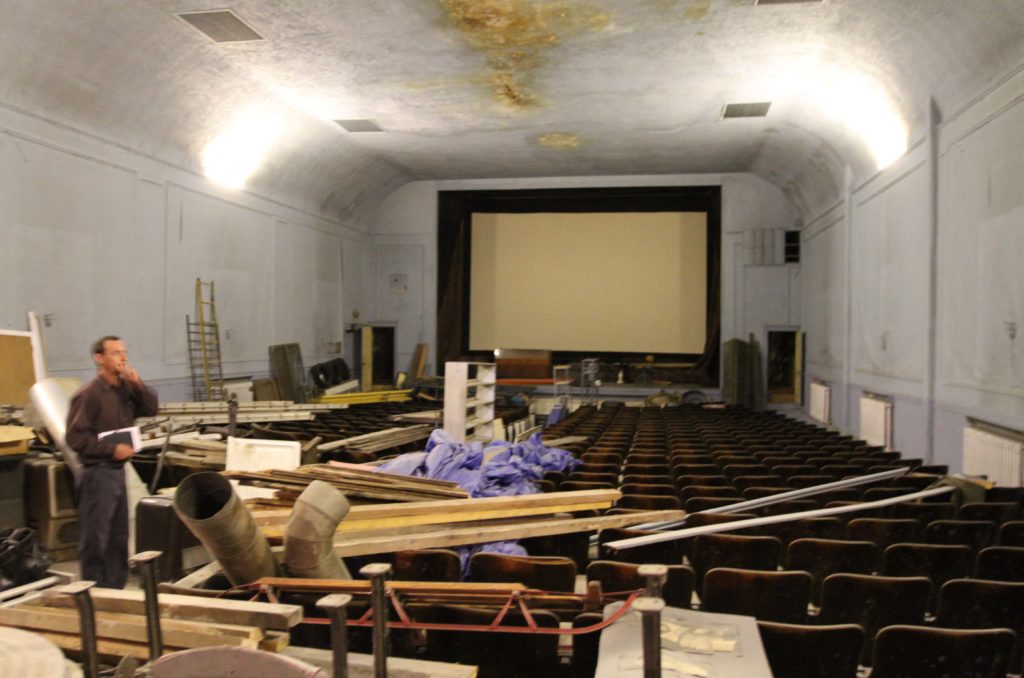

Concord Historical Society Connects with Abbot-Downing Historical Society
Concord Historical Society Connects with Abbot-Downing Historical Society
Results in acquisition of Concord Coach No. 306 from Waitsfield, Vermont
On August 23, 2017, the following email message was received in the Concord Historical Society general mailbox (info@concordhistoricalsociety.com) :
Waitsfield and Champlain Valley Telecom, Waitsfield Vermont: We have the original Concord stage (restored) that was used by JJ Kelty, and ran between Waitsfield and Middlesex Vermont. Prior plans to build a timeline museum in Waitsfield, left us with this piece and it has been stored inside a temperature controlled room on a support frame so the wooden wheels are not being stressed. We are looking for someone who has room to display this fine piece, and have had no luck. Do you have any ideas?
Richard Osborne, who replies to or refers the many inquiries sent to the “info” mailbox for the Society, forwarded the message to Peter James of the Abbot-Downing Historical Society. About two and a half months later, in early November, Osborne received the following email from Peter James:
On Friday, August 25th, I contacted Eric Haskin and Tom Little and I went to Waitsfield that day to check out the coach and put in our desire to acquire it. Eric said he would get back to me and on Monday morning, he called and left a message that said they had decided to “transfer” the coach to the Abbot-Downing Historical Society! I did not want to jinx the deal and have kept quiet until the coach was actually in Concord.
Getting the coach from Waitsfield to Concord has taken almost two months of planning and getting everyone involved to have an available day when the weather cooperated. That day was October 17th. A crew from here went up with two trucks and two trailers to bring back the coach and all the wheels ( there are two set of wheels). It was a long day, but the coach is now back in Concord. In order to fit it into the building where it was being stored, the wheels have been removed and the coach is on a steel cradle, not unlike what you would do with a boat. After the wheels have been put back on. the coach will go to Hopkinton to join the other two.
We are working towards a museum in Concord and as the collection grows and we concentrate on Abbot & Downing vehicles, the collection is really becoming “world class”. In addition to the three coaches, we have about 10 or 12 A-D vehicles dated back to before 1820 and up to near the end of production.
I want to thank you for your help in getting this really great addition to the collection.
The coach is Abbot-Downing’s No. 306, and it traveled the Mad River Valley route from Waitsfield to Middlesex to under the ownership of J. J. Kelty in the 1800s. It found its way to the ownership of The Henry Ford museum in Dearborn, Michigan, but was damaged while on loan to another museum. The Henry Ford granted the coach to the Haskin family, owners of Waitsfield Telecom, the local telephone company in Waitsfield, Vermont. Plans were made to place the coach in a museum to be established in Waitsfield, but those plans were not carried through, leading the Haskin family to explore where it might be permanently displayed and cared for. That in turn led to the transfer to the Abbot-Downing Historical Society.
The Abbot-Downing Historical Society is dedicated to the preservation of vehicles manufactured by the Abbot-Downing Company in Concord, and to education about the company’s history, from its founding and creation of the famed Concord Coach in the 1800s to its manufacture of motorized fire engines and trucks in the early 1900s. Originally named the Concord Coach Society in 1977, the organization changed its name to the Abbot-Downing Historical Society in 2011. It’s website is www.concordcoach.org.
Here is a photo of Coach No.306 before it left Waitsfield and was brought to Concord by the Abbot-Downing Historical Society:
